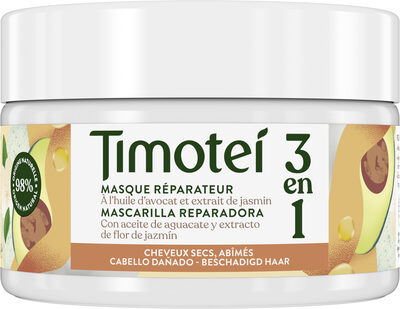TIMOTEI MASQUE 3 EN 1 Réparateur 300ML - 300 ml
This product page is not complete. You can help to complete it by editing it and adding more data from the photos we have, or by taking more photos using the app for Android or iPhone/iPad. Thank you!
×
Some of the data for this product has been provided directly by the manufacturer Unilever France.
Barcode: 8710522724880 (EAN / EAN-13)
Common name: Masque Hydratant.
Quantity: 300 ml
Brands: Timotei
Categories: Non food products, Open Beauty Facts
Labels, certifications, awards:
Green Dot
Origin of the product and/or its ingredients: Turquie
Countries where sold: France
Matching with your preferences
Health
Ingredients
Additives
Ingredients analysis
Nutrition
Environment
Packaging
Transportation
Other information
Conservation conditions: À conserver dans un endroit sec et propre après utilisation.
Customer service: Timotei Relation Consommateurs, Unilever France, 20 rue des Deux Gares 92842 Rueil-Malmaison Cedex
Report a problem
Data sources
The manufacturer Unilever France uses Equadis to automatically transmit data and photos for its products.
Product added on by openfoodfacts-contributors
Last edit of product page on by org-unilever-france-gms.
Product page also edited by off.a21be342-4163-410f-94f4-753de77c67f8, packbot, segundo.



